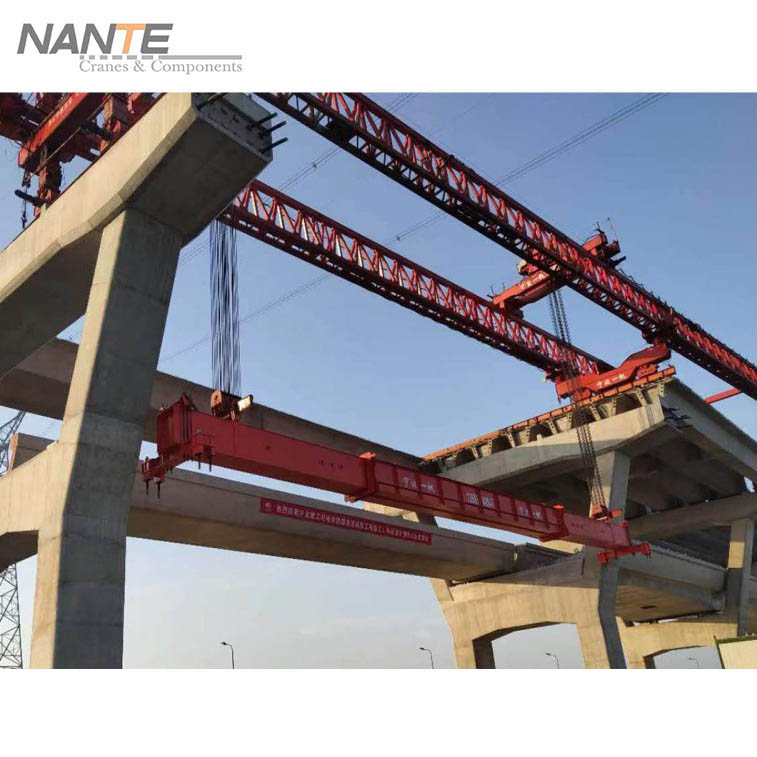What Construction Cranes Can Lift An In-Depth Analysis
Date: 2024-06-27 Share:
Understanding Construction Cranes
To understand the impressive capabilities of construction cranes, one must first explore the various types of cranes used in the industry. These machines are engineered to tackle heavy lifting tasks, supporting the construction of everything from humble residences to towering skyscrapers.
Types of Construction Cranes
Tower Cranes
Tower cranes are the towering giants that often dominate city skylines during major construction projects. They are fixed to the ground on a concrete slab or attached to the side of structures. These cranes can reach great heights and have a long horizontal jib that can rotate 360 degrees, providing maximum reach and efficiency. Tower cranes are mainly used for the construction of tall buildings due to their impressive lifting capacity and height advantage.
Mobile Cranes
Unlike the stationary tower cranes, mobile cranes offer flexibility and mobility, making them indispensable in diverse construction environments. These cranes are mounted on crawlers or rubber-tired carriers, allowing them to move around a construction site with ease. Mobile cranes include truck-mounted cranes and rough terrain cranes, each suited for different site conditions. They are ideal for lifting jobs where ease of relocation is a key factor.
Overhead Cranes
Overhead cranes, often referred to as bridge cranes, are typically used in industrial environments such as factories and warehouses. They consist of parallel runways with a traveling bridge spanning the gap. The hoist, the device that lifts the load, moves along the bridge. These cranes are crucial for moving heavy loads in a controlled and efficient manner within a confined area, improving productivity and safety.
Common Loads Lifted by Construction Cranes
Construction cranes are versatile machines equipped to lift a variety of loads necessary for construction projects. Understanding what construction cranes can lift helps in appreciating their value and utility on worksites.
As one of the famous brands in the production of winches, cranes and crane parts, Nante Crane is dedicated to research and development of lifting and material handling technologies. We adopt innovative ideas and design in developing new products and services. Backed up by a wealth of industrial experience, we can provide customers with high quality lifting equipment and components.
Building Materials
Steel Beams
Steel beams are fundamental components in the construction of modern buildings and infrastructure. Construction cranes are regularly employed to lift and position these heavy and elongated materials. They are preferred for their strength and durability, which are key to the structural integrity of buildings. Cranes ensure the precise placement of steel beams, which is critical for the stability of the overall structure.
Concrete Slabs
Another common load for construction cranes is concrete slabs. These sizeable and weighty slabs are used in flooring and roofing, among other applications. Given the substantial weight of concrete, cranes are essential for lifting and maneuvering these slabs into position efficiently and safely. The ability to lift and place these slabs quickly contributes significantly to the overall speed and efficiency of construction projects.
Bricks and Blocks
Bricks and blocks, though individually lightweight, become substantial loads when stacked and bundled for construction purposes. Construction cranes often lift pallets of these materials to various heights, facilitating the rapid assembly of walls and structures. The capability to hoist these bundles reduces manual lifting, thereby enhancing safety and productivity on the construction site.
Heavy Machinery
Construction projects frequently require the use of heavy machinery such as excavators, bulldozers, and generators. Lifting and transporting these massive pieces of equipment around a job site is a task well-suited for construction cranes. The cranes’ ability to handle these burdensome loads ensures that machinery can be moved efficiently and safely, minimizing downtime and maximizing productivity.
Prefabricated Components
Wall Panels
Prefabricated wall panels are increasingly used in construction due to their time-saving benefits. These panels are created off-site and then transported to the construction site for installation. Construction cranes are vital in lifting these panels, aligning them properly, and placing them in their designated positions. The use of cranes ensures that these large, ready-to-install components are handled with the precision required to maintain structural integrity.
Roof Trusses
Similar to wall panels, prefabricated roof trusses are assembled off-site and then lifted into place by construction cranes. Roof trusses are essential for supporting the roof of a structure, making their proper placement critical. Cranes provide the lifting power needed to hoist these heavy components and set them accurately, speeding up the construction process and ensuring stability.
Specialized Lifting Tasks in Construction
While the majority of construction cranes handle general construction materials, they also undertake specialized lifting tasks, particularly in large-scale infrastructure projects.
Bridge Construction
In bridge construction, cranes play a crucial role in lifting and positioning large sections of the bridge, such as girders and bridge decks. These parts are often massive and require precise placement to maintain the structural integrity of the bridge. Construction cranes with high load capacities and stable bases are essential for these tasks, ensuring that all components are correctly positioned to ensure the bridge’s durability and safety.
Skyscraper Assemblies
Skyscraper construction is one of the most challenging tasks that maneuvering cranes must tackle. Tower cranes, in particular, are indispensable for lifting steel frames, glass panels, and even large sections of prefabricated building components up to extreme heights. The precision and reliability of construction cranes ensure that materials are transported safely to elevated positions, enabling workers to construct skyscrapers efficiently and securely.
Wind Turbine Installations
Wind turbines are critical for renewable energy generation, and their installation requires the specialized lifting capabilities of construction cranes. These turbines consist of long blades and heavy nacelles that need to be lifted to considerable heights. Construction cranes capable of handling these extensive and heavy components are vital for the successful erection of wind turbines. These cranes ensure that every part of the turbine is positioned correctly to harness wind energy effectively.
As one of the famous construction crane production and manufacturing brands, Nante Crane is committed to helping our clients reduce investment cost, improve production efficiency, and economize energy consumption. Nante Crane’s main products include industrial cranes, offshore cranes, Launching Crane, electric hoists, crane travel unit, mobile power supply system etc. with reliable and excellent performance.
Safety and Regulatory Considerations
The operation of construction cranes involves rigorous safety and regulatory standards to prevent accidents and ensure operational efficiency. Two primary considerations in the use of construction cranes are load capacity limits and operator training requirements.
Load Capacity Limits
Every construction crane has a specified load capacity limit, which should never be exceeded. Exceeding these limits can result in mechanical failure, resulting in potentially catastrophic accidents. It is crucial to adhere to manufacturer guidelines and regulatory standards when determining the weight of the loads being lifted. Regular inspections and maintenance are necessary to ensure that the cranes operate within their safe capacity ranges, thereby safeguarding both the workers and the machinery.
Operator Training Requirements
Operating a construction crane requires specialized training and certification. Operators need to be proficient in understanding load dynamics, crane operation protocols, and safety measures. Proper training ensures that crane operators can make informed decisions during lifting operations, minimizing risks and maximizing efficiency. Ongoing education and recertification are essential to keep operators updated on the latest safety standards and technological advancements in crane operation.
In addition to producing and manufacturing construction cranes, Nante Crane has achieved breakthroughs in core technology and has the ability to manufacture core components, which are widely used in more than 20 professional fields such as advanced manufacturing, metal processing, aerospace, etc. Nante Crane is committed to the research and development and manufacturing of handling machinery and technology.
In conclusion, construction cranes are indispensable tools in the construction industry, capable of lifting a wide array of materials and conducting specialized lifting tasks. Their versatility and lifting power not only expedite construction projects but also ensure the precise and safe placement of materials. As vital as they are, the successful and safe operation of construction cranes hinges on strict adherence to load capacities and comprehensive operator training. By understanding and implementing these principles, the construction industry can continue to build stronger, taller, and more innovative structures with the aid of these remarkable machines.




